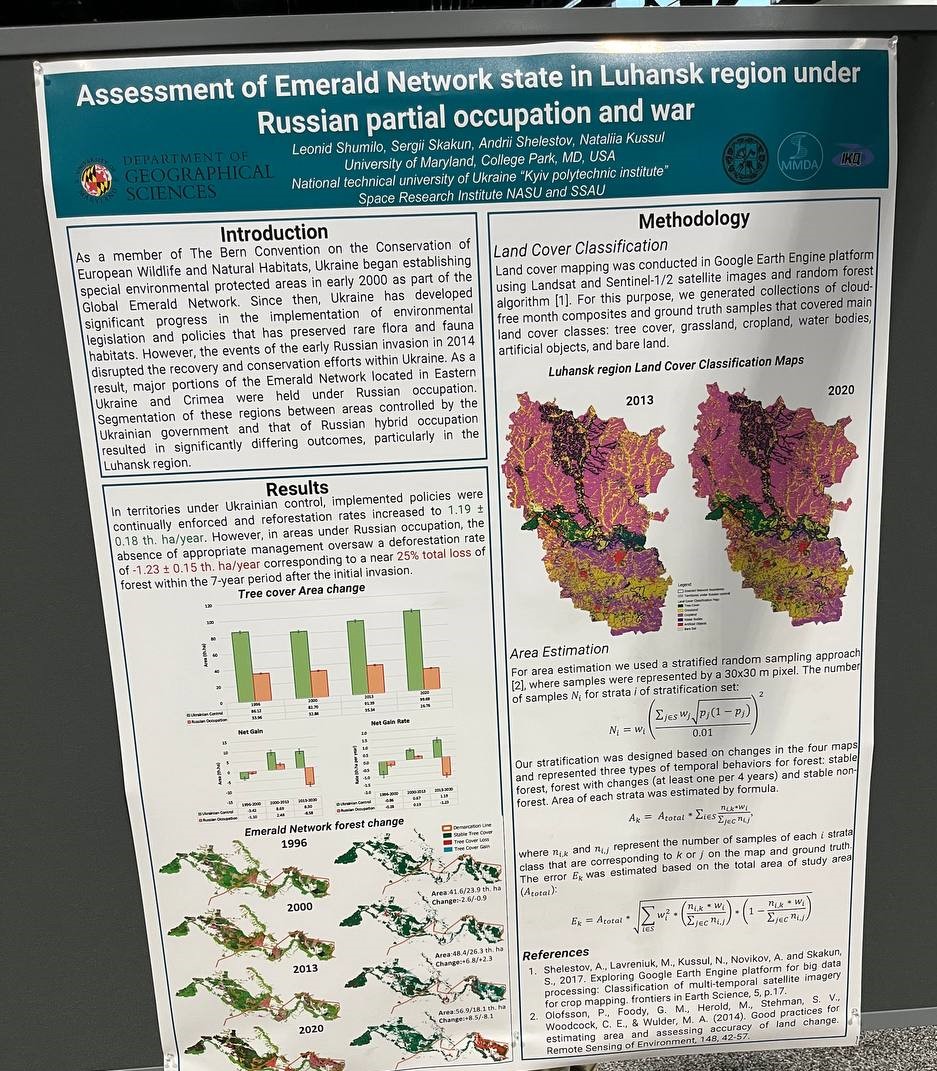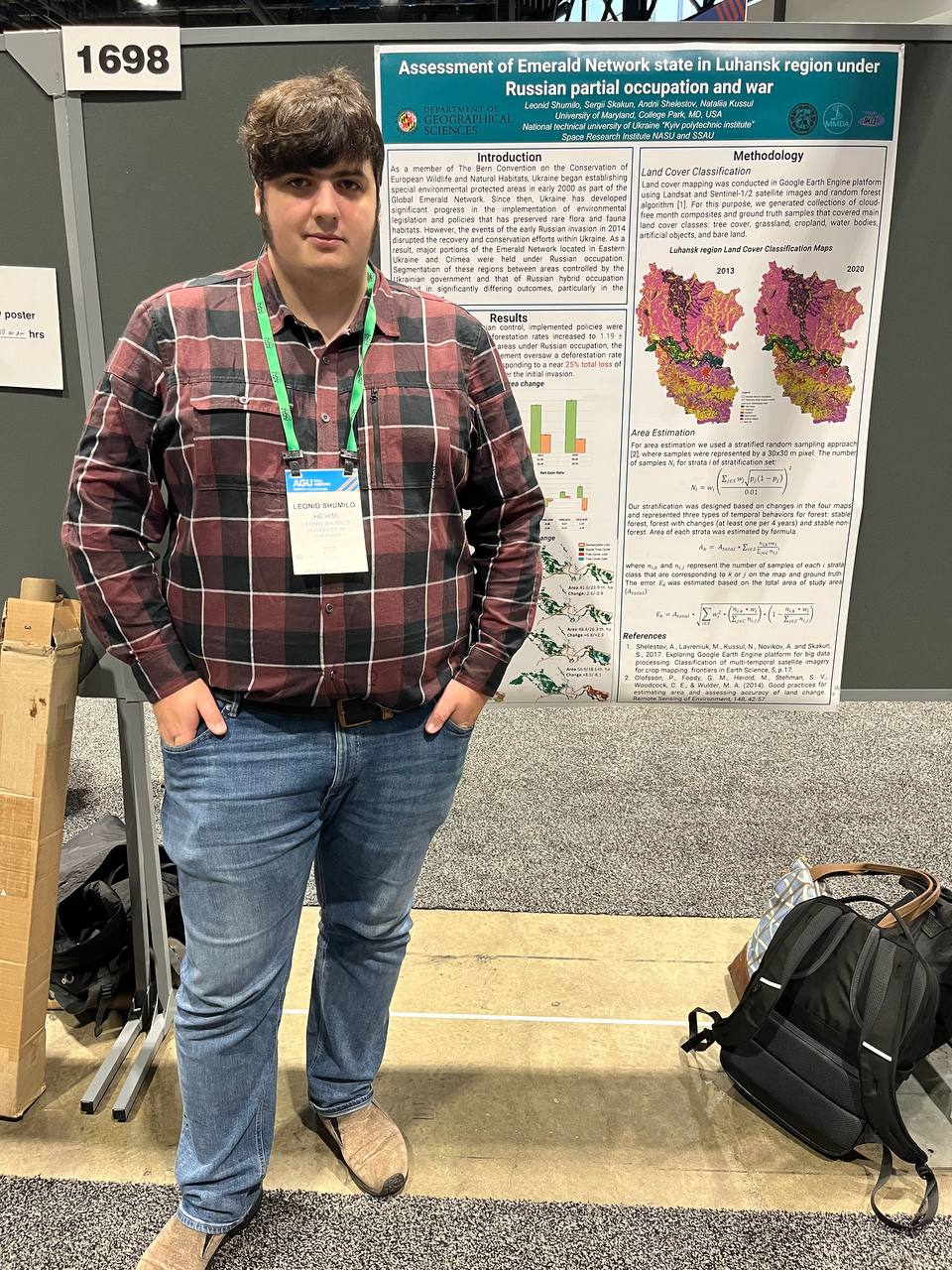Authors: Leonid Shumilo, University of Maryland College Park, College Park, United States, Sergii Skakun, University of Maryland College Park, Department of Geographical Sciences, College Park, United States, Andrii Shelestov, National technical university of Ukraine “Kyiv polytechnic institute”, Kyiv, Ukraine and Nataliia Kussul, Space Research Institute NAS Ukraine and SSA Ukraine, Kyiv, Ukraine
As a member of The Bern Convention on the Conservation of European Wildlife and Natural Habitats, Ukraine began establishing special environmental protected areas in early 2000 as part of the Global Emerald Network. Since then, Ukraine has developed significant progress in the implementation of environmental legislation and policies that has preserved rare flora and fauna habitats. However, the events of the early Russian invasion in 2014 disrupted the recovery and conservation efforts within Ukraine. As a result, major portions of the Emerald Network located in Eastern Ukraine and Crimea were held under Russian occupation. Segmentation of these regions between areas controlled by the Ukrainian government and that of Russian hybrid occupation resulted in significantly differing outcomes, particularly in the Luhansk region. Before the early war, deforestation patterns established similar trends with Russian controlled areas experiencing -0.28 ± 0.1 th. ha/year of deforestation and Ukrainian controlled areas experiencing -0.86 ± 0.22 th. ha/year of deforestation before the establishment of the Emerald Network from 1996 to 2000. Similarly, reforestation efforts reflected similar trends from 2000 and 2013 with Russian controlled areas experiencing 0.19 ± 0.06 th. ha/year of reforestation and Ukrainian controlled areas experiencing 0.67 ± 0.09 th. ha/year of reforestation. However, as a result of the 2014 invasion, ecological efforts have diverged according to the demarcation line separating regions under Ukrainian and Russian control. In territories under Ukrainian control, implemented policies were continually enforced and reforestation rates increased to 1.19 ± 0.18 th. ha/year. However, in areas under Russian occupation, the absence of appropriate management oversaw a deforestation rate of -1.23 ± 0.15 th. ha/year corresponding to a near 25% total loss of forest within the 7-year period after the initial invasion. Our study highlights the sensitivity of the ecosystem as a result of the war and further articulates the impacts of armed conflicts in environmental policies and management.



